new posts in all blogs
Viewing Blog: Kids Who Read, Most Recent at Top
Results 1 - 25 of 89

Finding Great Books and Getting Kids to Read Them
Statistics for Kids Who Read
Number of Readers that added this blog to their MyJacketFlap: 1
The Scorpio Races, by Maggie Stefvater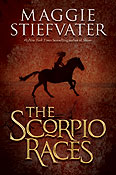
Established author of teen fiction Maggie Stiefvater has written a book that departs from her formulaic paranormal romance novels. She has taken an obscure Celtic myth about carnivorous horses from the sea, spun it into a story about both humankind’s love/fear conflict with nature and its endless struggle for and against power, and made it contemporary by smoothly pairing these timeless themes with a more modern one—girl empowerment.
The two main characters have both lost their parents—not unusual on an island that is besieged by wild carnivorous water horses—and both must win the Scorpio races in order to get what they feel they cannot live without. Sean has won the races before and must win this time to gain both his freedom from a heartless employer and ownership of the water horse he loves. Puck has never run a race, no girl has, and she has only a regular horse to race against the much faster water horses, but winning is her only chance to keep her house and her dignity. They admire each other; they become true friends, and romance blossoms.
The resolution of this conflict is masterful and every reader must take a solemn vow to never divulge the ending to anyone who has not read it, or skip ahead to read the ending. It is a book for teen readers of both genders, appropriate for younger readers, and fun for adults.
Gaby








The Scorpio Races, by Maggie Stefvater
Established author of teen fiction Maggie Stiefvater has written a book that departs from her formulaic paranormal romance novels. She has taken an obscure Celtic myth about carnivorous horses from the sea, spun it into a story about both humankind’s love/fear conflict with nature and its endless struggle for and against power, and made it contemporary by smoothly pairing these timeless themes with a more modern one—girl empowerment.
The two main characters have both lost their parents—not unusual on an island that is besieged by wild carnivorous water horses—and both must win the Scorpio races in order to get what they feel they cannot live without. Sean has won the races before and must win this time to gain both his freedom from a heartless employer and ownership of the water horse he loves. Puck has never run a race, no girl has, and she has only a regular horse to race against the much faster water horses, but winning is her only chance to keep her house and her dignity. They admire each other; they become true friends, and romance blossoms.
The resolution of this conflict is masterful and every reader must take a solemn vow to never divulge the ending to anyone who has not read it, or skip ahead to read the ending. It is a book for teen readers of both genders, appropriate for younger readers, and fun for adults.
Gaby


This Dark Endeavor: The Apprenticeship of Victor Frankenstein by Kenneth Oppel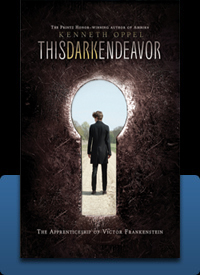
Kenneth Oppel takes Mary Shelley’s Victor Frankenstein and looks into his adolescence for clues to the man he became. In Oppel’s telling, young Victor lives in a centuries-old fortress in Geneva with his parents, his identical twin brother, Konrad, and his beautiful cousin Elizabeth. Konrad is easy for everyone to love; Victor has a more complicated personality—competitive, brooding and rebellious. Konrad falls ill and a series of nineteenth century doctors try to cure him. In this time period, medicine and science are on a cusp, turning from alchemy and magic into sound logic and method. It is not at all clear that even the most modern doctor will cure Konrad and Victor wants to turn to the older ways and be the one to bring his brother back to health.
To do this he lies to his parents, seeks out forbidden contacts, and put himself Konrad, and Elizabeth in serious danger. Herein lies the action of the story—the perilous ventures, the near escapes, the blood and gore. But Victor is not completely in this for his love for his brother. He wants glory; he wants to be more powerful than his parents and the doctors. And most of all, he wants Elizabeth to love him and not his brother. Action does abound in this story, but the torque of psychological angst never lags behind.
Kenneth Oppel is a master craftsman of the young teen novel. He knows how to give the young reader’s mind exactly what it wants and then dole out a whole lot more: to be swept up in the thrill of adventure, to recognize oneself often, and then to be challenged to do something particularly delicious—to think deeply…
While much of Oppel’s earlier books appeal to upper elementary and middle school readers of both genders, this novel will appeal to readers of both genders from middle school on into high school. Like all of his work, this book will also be loved just as much by adults as by their kids.
Gaby








This Dark Endeavor: The Apprenticeship of Victor Frankenstein by Kenneth Oppel
Kenneth Oppel takes Mary Shelley’s Victor Frankenstein and looks into his adolescence for clues to the man he became. In Oppel’s telling, young Victor lives in a centuries-old fortress in Geneva with his parents, his identical twin brother, Konrad, and his beautiful cousin Elizabeth. Konrad is easy for everyone to love; Victor has a more complicated personality—competitive, brooding and rebellious. Konrad falls ill and a series of nineteenth century doctors try to cure him. In this time period, medicine and science are on a cusp, turning from alchemy and magic into sound logic and method. It is not at all clear that even the most modern doctor will cure Konrad and Victor wants to turn to the older ways and be the one to bring his brother back to health.
To do this he lies to his parents, seeks out forbidden contacts, and put himself Konrad, and Elizabeth in serious danger. Herein lies the action of the story—the perilous ventures, the near escapes, the blood and gore. But Victor is not completely in this for his love for his brother. He wants glory; he wants to be more powerful than his parents and the doctors. And most of all, he wants Elizabeth to love him and not his brother. Action does abound in this story, but the torque of psychological angst never lags behind.
Kenneth Oppel is a master craftsman of the young teen novel. He knows how to give the young reader’s mind exactly what it wants and then dole out a whole lot more: to be swept up in the thrill of adventure, to recognize oneself often, and then to be challenged to do something particularly delicious—to think deeply…
While much of Oppel’s earlier books appeal to upper elementary and middle school readers of both genders, this novel will appeal to readers of both genders from middle school on into high school. Like all of his work, this book will also be loved just as much by adults as by their kids.
Gaby


How to Save a Life by Sara Zarr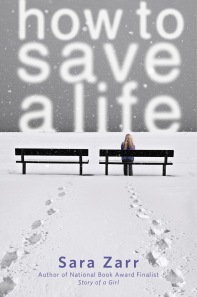
In this novel, a young woman whose darkness has been a long time coming connects with a once happy family that has recently experienced the sudden and devastating death of the father. The widow has invited the pregnant un-wed 18 year-old into her home with the intent of adopting the baby when it is born. Her daughter, in her last year of high school, thinks her mother has lost it. All three are so busy trying to save themselves from their own grief that almost no communication takes place. Aptly named, this story follows to resolution the dictum, “The life you save may be your own.”
Told in alternating perspectives of the two teen girls—Mandy and Jill—both the main and the supporting characters gradually emerge as complex and appealing individuals. Mandy negotiates with herself as she tries to both ditch her unfortunate childhood and to make better decisions for the new life she will bring into the world. Jill uses hostility as best she can to shut out others in her quest to numb the loss of her father. They are as different as two teens can be; their only common ground is the mother’s generosity and sorrow that holds them in an embrace. The magic of this story is how the author slowly brings them together to resolve the underlying and yet most gripping conflict in the plot, which is the question of the quality of life that awaits the new baby.
Zarr’s books, while clearly targeted to the teen girl audience, also fit well into the category of “If it’s good enough for a teen to read, it’s also good enough for an adult to read.” In fact this is a great book for mother and daughter to share.
Gaby


By:
kidswhoread,
on 11/5/2011
Blog:
Kids Who Read
(
Login to Add to MyJacketFlap)
JacketFlap tags:
friendship,
zombies,
Paranormal,
high school,
thriller,
9-12 Grade,
Mystery & Suspense,
Fantasy & Other Worlds,
suspenseful,
Add a tag
The Replacement by Brenna Yovanoff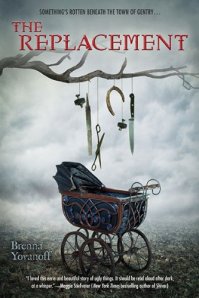
Mackie should not have lived long enough to become a teen. Most replacements–put into cribs when babies are taken for sacrifice– die fairly soon and are buried in the unconsecrated part of the cemetery. But Mackie’s sister and parents loved him anyway and unconditionally (not hard to imagine why most families wouldn’t) and he has loved them back. Now, however, his allergies to blood, iron, and church are wearing him down and he has to make contact with his own kind in the dark, damp tunnels to gain time.
With this contact, he soon comes up with an idea to stop the sacrifice of babies—to change the deeply troubled way things have always been for something better. This is today’s version of the common story of humankind’s vulnerability to evil: through unconditional love, the dark and scary can produce a hero who is willing to do anything to save us all.
This pleasing note of optimism comes from a novel that can only be classified a gothic horror thriller laced as it is with blood, cruelty, and decrepitude. From a novel about the saddest aspects of human life—loss and frailty—comes a novel about the best aspects of human life—genuine, deep caring for more than ourselves.
Both teen genders will like this book. It is well-told, the characters gain our sympathies, and there is more to it than scariness.
Gaby








The Replacement by Brenna Yovanoff
Mackie should not have lived long enough to become a teen. Most replacements–put into cribs when babies are taken for sacrifice– die fairly soon and are buried in the unconsecrated part of the cemetery. But Mackie’s sister and parents loved him anyway and unconditionally (not hard to imagine why most families wouldn’t) and he has loved them back. Now, however, his allergies to blood, iron, and church are wearing him down and he has to make contact with his own kind in the dark, damp tunnels to gain time.
With this contact, he soon comes up with an idea to stop the sacrifice of babies—to change the deeply troubled way things have always been for something better. This is today’s version of the common story of humankind’s vulnerability to evil: through unconditional love, the dark and scary can produce a hero who is willing to do anything to save us all.
This pleasing note of optimism comes from a novel that can only be classified a gothic horror thriller laced as it is with blood, cruelty, and decrepitude. From a novel about the saddest aspects of human life—loss and frailty—comes a novel about the best aspects of human life—genuine, deep caring for more than ourselves.
Both teen genders will like this book. It is well-told, the characters gain our sympathies, and there is more to it than scariness.
Gaby


By:
kidswhoread,
on 9/21/2011
Blog:
Kids Who Read
(
Login to Add to MyJacketFlap)
JacketFlap tags:
dystopia,
Uncategorized,
friendship,
Fantasy,
6-8 Grade,
9-12 Grade,
Mystery & Suspense,
Enjoyable for parents,
recovery from trauma,
suspenseful,
Add a tag
The Fox Inheritance, by Mary E. Pearson
This is the sequel to The Adoration of Jenna Fox as reviewed earlier. It follows the two friends who were in the same car crash that killed Jenna Fox. While Jenna’s parents had been able to salvage enough of her to bioengineer her back into life, Locke and Kara had only their minds preserved for 270 years. Now they have been brought to life by an evil genius who wants to use them as floor models for a business that offers a new life to those about to die.
While Adoration reads like a psychological or medical thriller, Fox is much more of an action page-turner. Kara and Locke must escape their creator into a world void of anybody they know and vastly changed. A cross-country chase ensues with spy technology and real goons on their trail. They seek Jenna, who is still alive, and resolution to the question of who they are now.
Both books are both thought-provoking and exciting to read. Girls from middle school on up will like both books and boys will certainly like the second one, so it’s worth a chance to start them with the first one.
Gaby


By:
kidswhoread,
on 8/1/2011
Blog:
Kids Who Read
(
Login to Add to MyJacketFlap)
JacketFlap tags:
family dysfunction,
friendship,
survival,
fine art,
6-8 Grade,
Easy Read,
Real World Fiction,
Enjoyable for parents,
Fantastic!,
Add a tag
Okay for Now, by Gary D. Schmidt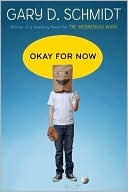
In Schmidt’s latest novel for middle school readers, eighth-grader Doug Swieteck has many cards stacked against him. He’s got a mean older brother and a liability for a father. He’s just moved to a new school. He can’t read. He gets in fights. The principal is after him. The coach hates him. He doesn’t have a decent coat or a warm pair of shoes. His mother is sad and long-suffering.
Yet the satisfaction in this story comes not from the bad guys getting their due. Instead, the satisfaction is much deeper and broader—it comes from the reassurance that the inner self is always and truly free. In Doug’s story, this deliverance is aided by the kindness of strangers and by the gift of fine art. In author Gary Schmidt’s capable hands, its light shines right out of the pages of the book, making every day look like a fresh new spring day.
The fine art in this story is a book of John James Audubon’s Birds of America that Doug finds in the local library. Each chapter in Okay for Now is faced with a different plate from this book, and in each chapter, Doug uses that plate to further understand his world—this bird was falling and there wasn’t a single thing in the world that cared at all (the Arctic Tern) and that’s what the picture was about: meeting, even though you might be headed in different directions (The Forked-Tailed Petrel). A librarian—one of the kind strangers in this book—sees Doug’s interest in this book and encourages him to make his own drawings of the plates. The librarian’s critical analysis of these plates and the part they play in Doug’s story make a good reading experience into a sublime one.
I highly recommend this wonderful book for middle school kids of both genders and for adults who like a good story.
Gaby








Okay for Now, by Gary D. Schmidt
In Schmidt’s latest novel for middle school readers, eighth-grader Doug Swieteck has many cards stacked against him. He’s got a mean older brother and a liability for a father. He’s just moved to a new school. He can’t read. He gets in fights. The principal is after him. The coach hates him. He doesn’t have a decent coat or a warm pair of shoes. His mother is sad and long-suffering.
Yet the satisfaction in this story comes not from the bad guys getting their due. Instead, the satisfaction is much deeper and broader—it comes from the reassurance that the inner self is always and truly free. In Doug’s story, this deliverance is aided by the kindness of strangers and by the gift of fine art. In author Gary Schmidt’s capable hands, its light shines right out of the pages of the book, making every day look like a fresh new spring day.
The fine art in this story is a book of John James Audubon’s Birds of America that Doug finds in the local library. Each chapter in Okay for Now is faced with a different plate from this book, and in each chapter, Doug uses that plate to further understand his world—this bird was falling and there wasn’t a single thing in the world that cared at all (the Arctic Tern) and that’s what the picture was about: meeting, even though you might be headed in different directions (The Forked-Tailed Petrel). A librarian—one of the kind strangers in this book—sees Doug’s interest in this book and encourages him to make his own drawings of the plates. The librarian’s critical analysis of these plates and the part they play in Doug’s story make a good reading experience into a sublime one.
I highly recommend this wonderful book for middle school kids of both genders and for adults who like a good story.
Gaby


The Tiger’s Wife, by Téa Obreht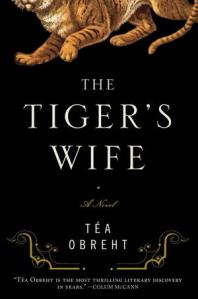
A girl comes of age during the Bosnian War and its aftermath. She then becomes a doctor in a desire to help her country recover. On a trip to deliver inoculations to orphanages, she learns of her grandfather’s death. Through her memories of her grandfather and his stories, a story of Bosnian conflict and culture emerge. By the end, the reader will not be able to pass a quiz on the conflict, but the reader will have been there, on the ground and among the people.
Obreht is a storyteller — come sit by me here and I’ll tell you a story. type of a storyteller. The main two stories here are about the tiger’s wife and the deathless man. Interspersed are full, rich stories of more characters–Luka the butcher, Darisa the Bear, the apothecary, as well as chair-riveting stories like the narrator’s journey to the “crossroads.” Her writing is lean, vivid, and masterful.
This is a good book for an experienced teen reader for several reasons. The author herself is young–twenty-one when she began the novel–and her voice, though as assured as that of a seasoned writer, is that of a young person. Though her plot is not linear, experience teen readers will fall into her rich storytelling. And finally, she is a very creative and skilled writer–teens will enjoy feeling they have not read anything like this book before while recognizing its exceptional worth.
Gaby








The Tiger’s Wife, by Téa Obreht
A girl comes of age during the Bosnian War and its aftermath. She then becomes a doctor in a desire to help her country recover. On a trip to deliver inoculations to orphanages, she learns of her grandfather’s death. Through her memories of her grandfather and his stories, a story of Bosnian conflict and culture emerge. By the end, the reader will not be able to pass a quiz on the conflict, but the reader will have been there, on the ground and among the people.
Obreht is a storyteller — come sit by me here and I’ll tell you a story. type of a storyteller. The main two stories here are about the tiger’s wife and the deathless man. Interspersed are full, rich stories of more characters–Luka the butcher, Darisa the Bear, the apothecary, as well as chair-riveting stories like the narrator’s journey to the “crossroads.” Her writing is lean, vivid, and masterful.
This is a good book for an experienced teen reader for several reasons. The author herself is young–twenty-one when she began the novel–and her voice, though as assured as that of a seasoned writer, is that of a young person. Though her plot is not linear, experience teen readers will fall into her rich storytelling. And finally, she is a very creative and skilled writer–teens will enjoy feeling they have not read anything like this book before while recognizing its exceptional worth.
Gaby


By:
kidswhoread,
on 5/30/2011
Blog:
Kids Who Read
(
Login to Add to MyJacketFlap)
JacketFlap tags:
Uncategorized,
friendship,
high school,
coming-of-age,
9-12 Grade,
Easy Read,
Real World Fiction,
Enjoyable for parents,
recovery from trauma,
Add a tag
Whatever Happened to Goodbye by Sarah Dessen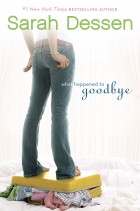
Sarah Dessen is an author who aspires to express what her readers are feeling. She writes to an audience of teenage girls about the challenges of maintaining equilibrium in the face of adversity. The appeal of her books lies in the first person narrative voice of genuine and likable characters who work through their own reactions to difficult events in their lives. While she does not shrink from difficult subjects, neither does she indulge in shock value. Her steadfast message is one of the value of being real, forgiving, and true. This, and her natural writing style, make her books suitable and of interest to girls as young as middle school and enjoyable reading for their parents as well.
In this book, Dessen’s latest and seventh novel for young adults, seventeen-year-old Mclean tells the story of her reaction to her parents scandalous divorce. She struggles with a loss of identity, resentment, and disorientation. After several moves with her dad, a consultant for a restaurant chain, she lands in a town where the people she encounters begin to help her bring her life back into focus, if not to stability. For Dessen fans, it is another visit to her emotionally satisfying fiction; for those new to her writing, probably the first of many.
Gaby








Whatever Happened to Goodbye by Sarah Dessen
Sarah Dessen is an author who aspires to express what her readers are feeling. She writes to an audience of teenage girls about the challenges of maintaining equilibrium in the face of adversity. The appeal of her books lies in the first person narrative voice of genuine and likable characters who work through their own reactions to difficult events in their lives. While she does not shrink from difficult subjects, neither does she indulge in shock value. Her steadfast message is one of the value of being real, forgiving, and true. This, and her natural writing style, make her books suitable and of interest to girls as young as middle school and enjoyable reading for their parents as well.
In this book, Dessen’s latest and seventh novel for young adults, seventeen-year-old Mclean tells the story of her reaction to her parents scandalous divorce. She struggles with a loss of identity, resentment, and disorientation. After several moves with her dad, a consultant for a restaurant chain, she lands in a town where the people she encounters begin to help her bring her life back into focus, if not to stability. For Dessen fans, it is another visit to her emotionally satisfying fiction; for those new to her writing, probably the first of many.
Gaby


Revolution, by Jennifer Donnelly
Jennifer Donnelly has written a book in an authentic teen voice in the tradition of Holden Caulfield that is highly educational, both about music and about the French Revolution. The narrator is a teen girl in her last year at a prestigious New York prep school. She has recently suffered a family tragedy and is tormented by what she views as her responsibility for that tragedy. Her often absent father whisks her away to Paris, thinking it would be good for her to get away.
In Paris, Andi discovers an old diary hidden in a secret compartment in a centuries-old guitar case. She has in her hands the guitar and the diary of another teen girl who lived during the French Revolution. Though all Andi can think of is leaving Paris and her father, as she slowly reads this diary she gets drawn further and further into the life of Alexandrine, her eighteenth century counterpart, until she is, in fact, there on the streets of revolutionary Paris. Even for readers new to the story of the French Revolution, Donnelly’s account is thorough and illuminating.
The second major theme of this story is music, specifically, the tradition of music that passes from the earliest classic composers all the way down through modern rap music. Andi is a serious musician; in fact, her music is all that keeps her together for most of the novel. Her musings on styles and compositions throughout this story should be of great interest to any teen interested in music.
Teens of both genders, both young and old, will like this book. It is history, it is music, and it is the pursuit of personal strength in the face of the worst of odds.
Gaby








Revolution, by Jennifer Donnelly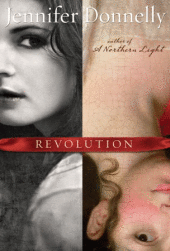
Jennifer Donnelly has written a book in an authentic teen voice in the tradition of Holden Caulfield that is highly educational, both about music and about the French Revolution. The narrator is a teen girl in her last year at a prestigious New York prep school. She has recently suffered a family tragedy and is tormented by what she views as her responsibility for that tragedy. Her often absent father whisks her away to Paris, thinking it would be good for her to get away.
In Paris, Andi discovers an old diary hidden in a secret compartment in a centuries-old guitar case. She has in her hands the guitar and the diary of another teen girl who lived during the French Revolution. Though all Andi can think of is leaving Paris and her father, as she slowly reads this diary she gets drawn further and further into the life of Alexandrine, her eighteenth century counterpart, until she is, in fact, there on the streets of revolutionary Paris. Even for readers new to the story of the French Revolution, Donnelly’s account is thorough and illuminating.
The second major theme of this story is music, specifically, the tradition of music that passes from the earliest classic composers all the way down through modern rap music. Andi is a serious musician; in fact, her music is all that keeps her together for most of the novel. Her musings on styles and compositions throughout this story should be of great interest to any teen interested in music.
Teens of both genders, both young and old, will like this book. It is history, it is music, and it is the pursuit of personal strength in the face of the worst of odds.
Gaby


Strings Attached by Judy Blundell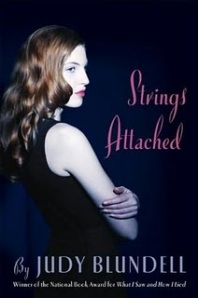
For many years, author Judy Blundell wrote under a pen name as a writer for hire. Then, a few years ago, she wrote a book simply because she wanted to write it. Her agent read it and suggested she put her own name to it. That book, What I Saw and How I Lied won the National Book Award in 2008. In March of 2011, she published her second book under her own name–Strings Attached. Both books are narrated by a teen girl seeking mental and physical independence from dysfunctional adults in a dark atmosphere full of anxiety, post-WWII. In both, the girl fumbles in her perceptions of truth, wises up, and makes the hard choices.
While the first book takes place mainly in Florida, the second one is set in New York where small town Kit Corrigan aims to make a splash on the big stage. However, it is much harder than she expected and she agrees to accept help without fully questioning why the help is offered. Inevitably, the true reasons unfold…
For teen girls tired of the same old genres–fantasy, paranormal, dystopia, teen angst–these noir thrillers are a refreshing change. The setting in post WWII enhances the mystery and highlights the timeless theme of yearning for independence followed by loss of innocence. The author’s extensive story-writing experience and her thorough research of the time period make an entertaining and satisfying read. Suitable for and of interest to girls from eighth grade on up.
Gaby








Strings Attached by Judy Blundell
For many years, author Judy Blundell wrote under a pen name as a writer for hire. Then, a few years ago, she wrote a book simply because she wanted to write it. Her agent read it and suggested she put her own name to it. That book, What I Saw and How I Lied won the National Book Award in 2008. In March of 2011, she published her second book under her own name–Strings Attached. Both books are narrated by a teen girl seeking mental and physical independence from dysfunctional adults in a dark atmosphere full of anxiety, post-WWII. In both, the girl fumbles in her perceptions of truth, wises up, and makes the hard choices.
While the first book takes place mainly in Florida, the second one is set in New York where small town Kit Corrigan aims to make a splash on the big stage. However, it is much harder than she expected and she agrees to accept help without fully questioning why the help is offered. Inevitably, the true reasons unfold…
For teen girls tired of the same old genres–fantasy, paranormal, dystopia, teen angst–these noir thrillers are a refreshing change. The setting in post WWII enhances the mystery and highlights the timeless theme of yearning for independence followed by loss of innocence. The author’s extensive story-writing experience and her thorough research of the time period make an entertaining and satisfying read. Suitable for and of interest to girls from eighth grade on up.
Gaby


By:
kidswhoread,
on 4/2/2011
Blog:
Kids Who Read
(
Login to Add to MyJacketFlap)
JacketFlap tags:
dystopia,
friendship,
girls,
Series Books,
power,
coming-of-age,
teen romance,
Reluctant Reader,
6-8 Grade,
9-12 Grade,
Easy Read,
Mystery & Suspense,
Add a tag
Matched, by Ally Condie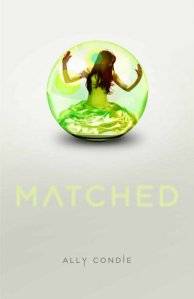
Dystopias typically exist in a future world where some kind of organizational force tries to control a population whose flaws nearly destroyed life in a previous time. That organization and that control, however, tend to painfully crimp the human spirit. In Matched, the first book in a trilogy, the Officials attempt to control every aspect of an individual’s life: what they eat, what they wear, who they marry, where they live, where they work. By doing this, they intend to eliminate disease, strife, and unhappiness.
But, of course, it doesn’t work. The individual’s desire for freedom is stronger than the desire for bland happiness, as it turns out, and as we all know too much power in the hands of the few tends to corrupt. In Matched, a seventeen-year-old girl has been officially “matched” with her intended husband, but there seems to be a catch–a second intended has somehow slipped into the picture which conspires to cause her to question the life the Officials have arranged for her. Once that question arises, the desire to make her own choices and pay her own dues can no longer be corraled.
For a dystopic novel, this story has an unusual sweetness. There is a lot of kindness and genuine caring among the characters. The depiction of two young people falling in love is very tender; the conniving of the Officials almost takes a background role. I think middle school girls who like books about relationships will want to read this book and the theme of independence and making your own choices is strongly appealing to young teens. It is not a challenging read by any means and may appeal even to reluctant girl readers.
Gaby








By:
kidswhoread,
on 3/21/2011
Blog:
Kids Who Read
(
Login to Add to MyJacketFlap)
JacketFlap tags:
courage,
Adventure,
boys,
survival,
coming-of-age,
violence,
Reluctant Reader,
9-12 Grade,
Mystery & Suspense,
suspenseful,
Add a tag
Revolver by Marcus Sedgwick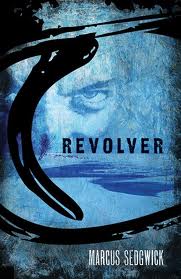
Yes, this is a page-turning thriller centered on a fourteen-year-old boy and a really, really bad guy who threatens him and his sister and has quite likely taken the life of both his parents. And on a Colt Single Action Army, 1873 model revolver. The setting: a lone cabin across a frozen lake from a hard scrabble mining town in the bitter cold of the artic north.
But it is also a story about the gifts parents give their children to help them survive when they are on their own. In this case, Sig’s parents gave him very different gifts: his father gave him knowledge of the real world so that Sig could be able to survive whatever harshness he might encounter; his mother gave him a concern for the health of his own inner spirit so that his soul could survive the same. As it turns out, Sig will draw on both of his parents’ gifts to create a third option when his choice becomes to take a life or lose his own.
As such, this novel reads ninety percent thriller and ten percent fable. In fact, by the end, I was somewhat reminded of The Rime of the Ancient Mariner. Written, of course, for young adults of today. Though this story features a male protagonist and a revolver, I think both genders would enjoy it from middle school on up. However, the bad guy is convincingly bad–his violence explicit and his sexual predation implied–which makes it more appropriate for the older, better-read teens.
Gaby








Half a Life by Darin Strauss
“Half my life ago, I killed a girl.” begins this memoir. Having just turned eighteen (the age when your identity is still up for grabs, in the author’s words), Strauss accidentally hit a girl riding a bike and killed her. He was forever changed.
With incisive honesty, Strauss lays bare in this memoir what he spent half a lifetime being unable to dredge up into the light. He takes readers along on this journey into the inner-most workings of his own experience, to the lonely place where the person in the throes of trauma exists. Without sentimentality, he simply nails the precise truth of the effect an unfortunate few seconds had on him.
Though not written for teens, Half a Life is a book that will interest them for it is ultimately about them and who they will become. In fact, I wish there were more books like it because it offers so much for the teen reader: life-enhancing information and superb writing that is at once demanding and entertaining. Though it reads more like a long essay than a novel, this short book is nevertheless a page-turner, albeit one that benefits from frequent reflective pauses. Teens of both genders who like getting deep into the lives of others and who like a mental challenge should really enjoy this book.
Gaby








By:
kidswhoread,
on 2/14/2011
Blog:
Kids Who Read
(
Login to Add to MyJacketFlap)
JacketFlap tags:
high school drinking,
high school romance,
friendship,
boys,
girls,
coming-of-age,
high school angst,
Reluctant Reader,
9-12 Grade,
Real World Fiction,
Enjoyable for parents,
recovery from trauma,
Add a tag
The Boy Who Harnessed the Wind by William Kamkwamba and Bryan Mealer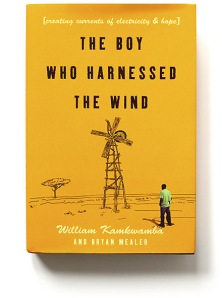
After the Malawi famine of 2000, William Kamkwamba’s father could no longer send him to school. He had learned how to read in his native language and had learned a little English. Not content to accept a future of subsistence farming and with a curiosity about how things worked, William began frequenting the village library which was stocked with old textbooks donated by the United States. He checked out books on science and physics, learning more English as he uncovered the information he sought.
Frequenting junk yards and raising suspicions of his sanity, William put together the knowledge he gleaned from books with bits of this and bits of that and lo!!! He ended up with a windmill that generated enough electricity to light up his family’s extremely modest home.
Hard to believe, perhaps, that such a story would make me weep, not out of sadness, but simply out of joy to be alive, but this one did. It is not because William’s striving and his success is so heartwarming, but because the way he and his co-writer tell the story. The young boy of this story leads the reader through the hard, hard work of the farm, heart-breaking tragedy, youthful antics, and iron-hard yearning to a bright place that extends way beyond this boy and this place with a voice that is consistently modest and tender.
Besides being a compelling read, a page-turner almost, this story would be of great interest for any boy or girl who likes to tinker, to invent, to make things that work. I am not the least bit mechanically oriented, so much of Kamkwamba’s descriptions of his constructions were way beyond my understanding–but kids who are fascinated by mechanics will understand it and be inspired. I am recommending this book for experienced readers from middle school on up.
Gaby








View Next 25 Posts







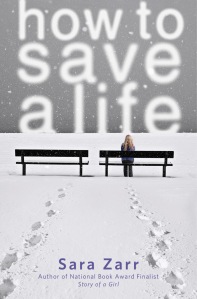



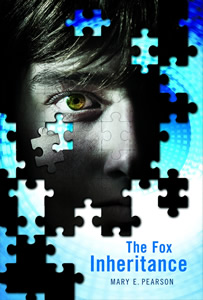














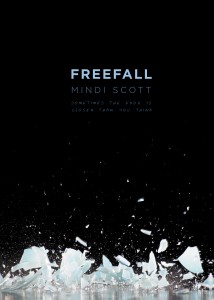

This sounds like a great read! Thanks!
http://1000wrongs.blogspot.com